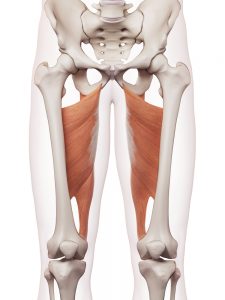8. Groin Strain
Posted by Phil Heler on December 6, 2015A groin strain is an injury to the adductors, the fan-like muscles in the upper thigh that serve to pull the legs together. This condition is common in sports that require explosive lower leg movement.
Groin strains evolve through frequent participation in sports that require explosive sudden changes in direction. This is obviously common in sports such as football, hockey, basketball, racket sports, football and volleyball. Symptoms include sharp pain, swelling and sometimes even bruising on the inside of the thigh.
Groin strain
A groin strain is an injury to the muscles of the inner thigh. This condition is common in people who participate in sports that require explosive lower leg movement, i.e running (with sudden changes in direction) or jumping. Groin injuries are therefore frequent in sports such as football (10-18% of all injuries), basketball, racket sports and hockey.
The groin muscles are the fan-like muscles situated in the upper thigh that serve to move the leg from an outside to an inside position from the hip. The muscles are known collectively as the adductor muscle group and consist of six muscles that bridge the anatomical space from the pelvis to the inner part of the femur (thigh bone). Groin strains often involve the primary adductor muscle (called Adductor Longus) through a combination of overuse or sudden contraction or moving the structure beyond its normal excursion. Mild strains, most common, often involve only a few muscle fibres (Grade 1) and therefore most of the muscle tissue will remain intact. Groin injuries can vary from partial (Grade 2) to complete tears (Grade 3) depending on the suddenness and force of the initial movement.
As with any sports injuries, prevention is the best course of action and a thorough warm-up routine is always advised in order to minimise risk of injury.
Symptoms for a Grade 1 tear can take as little as a week to vanish, but a Grade 3 can take a couple of months and may even require surgical intervention. As with any injury, the same basic rules apply: RICE (Rest Ice Compression and Elevation) and anti-inflammatories and analgesics (minimising pain and swelling) are the best treatment.
In the case of Grade 1 and Grade 2 tears, training should be avoided for at least a week. A gentle progressive stretching and strengthening program can be undertaken as long as pain is absent. A return to activity should be a gradual process, e.g. light jogging initially with a slow progression of building up speed and changes of direction. The most important thing is not to try and come back too soon. An absence of symptoms in normal activities while performing daily activities is deceiving and different from forces applied in training and competition.
